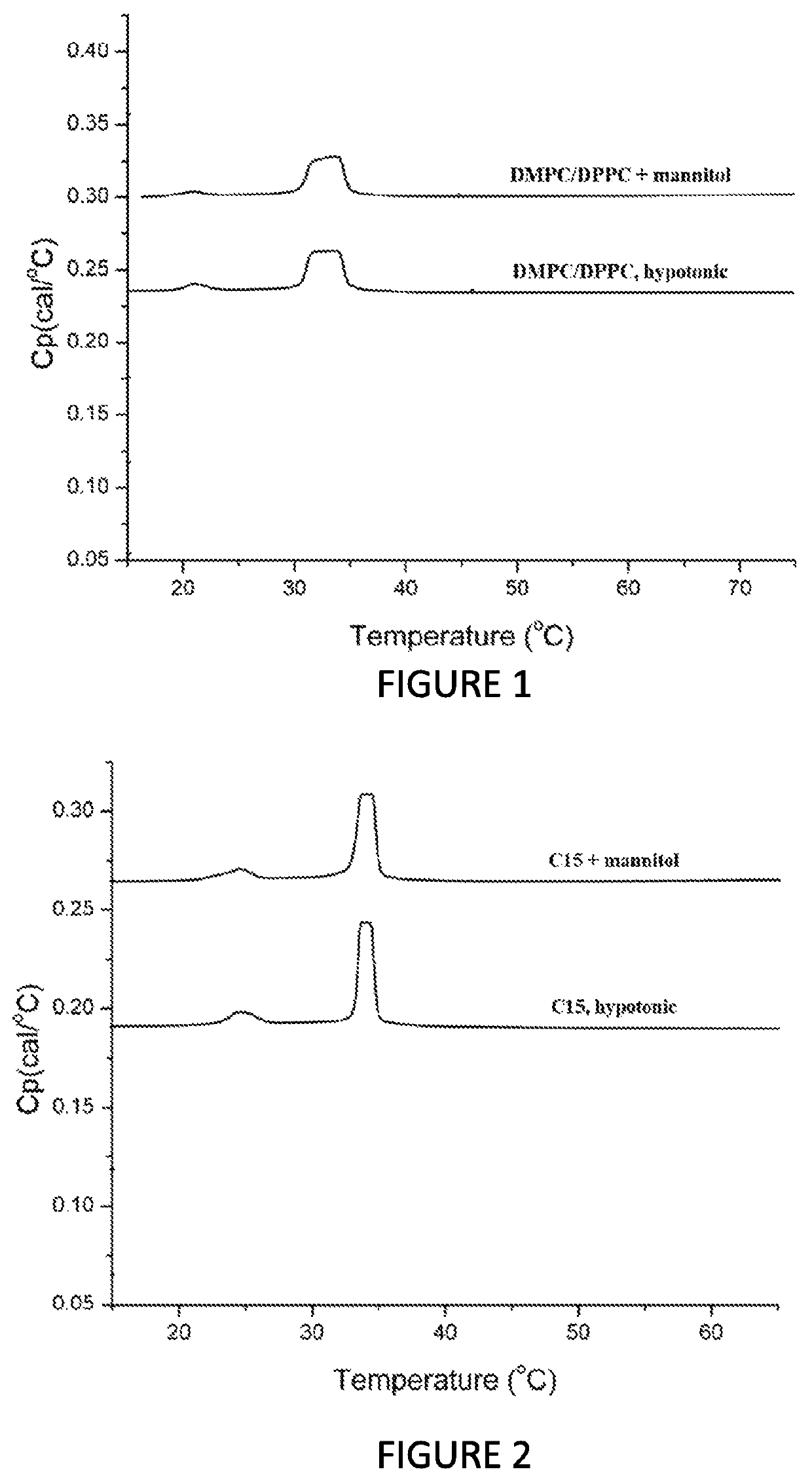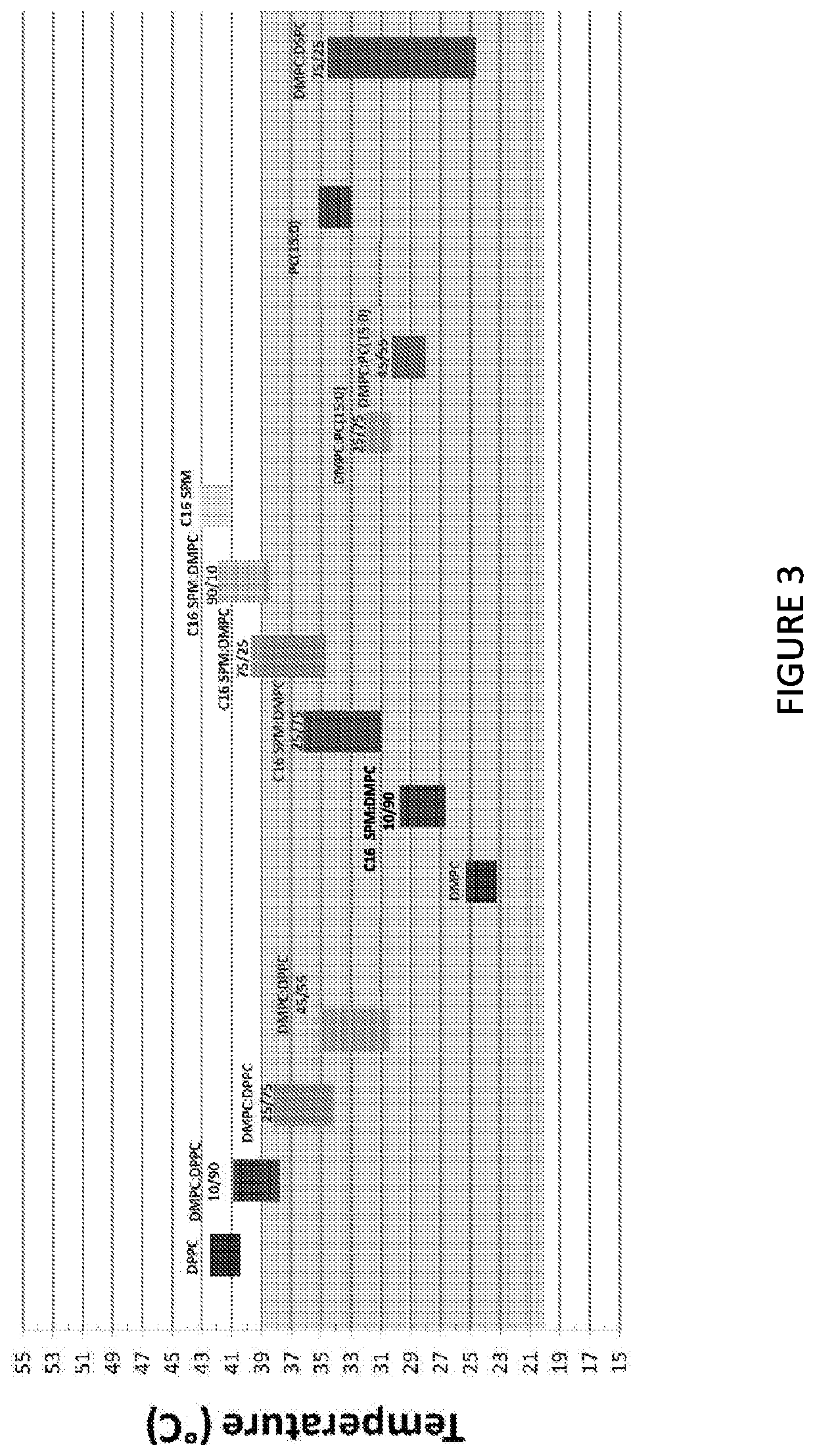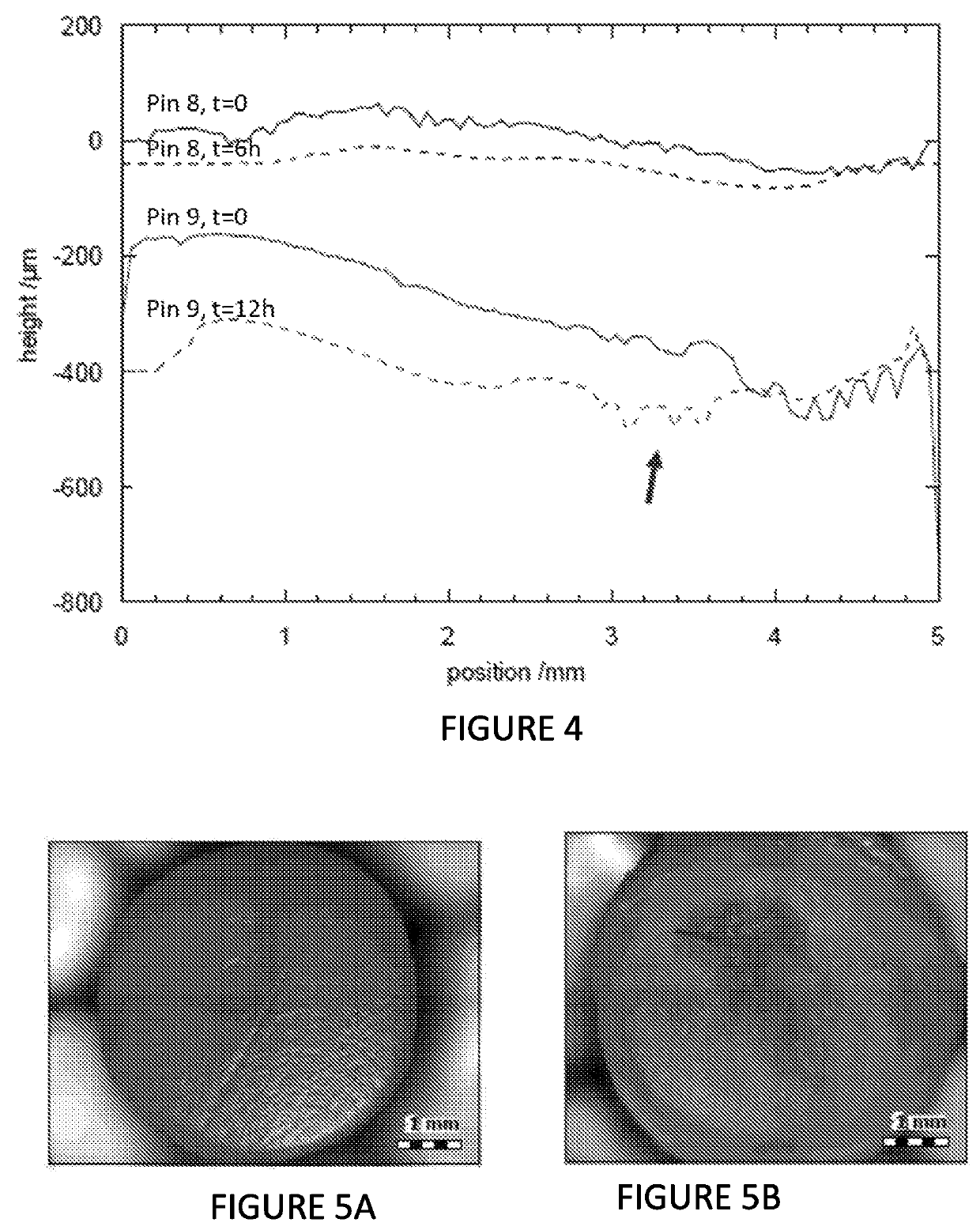Liposomal formulation for joint lubrication
a technology of liposomal formulation and joint lubrication, which is applied in the direction of drug compositions, prostheses, organic active ingredients, etc., can solve the problems of reducing the lubrication efficiency of liposomal formulation, and achieve the effects of reducing pain and irritation, improving or restoring joint mobility, and reducing local irritation
- Summary
- Abstract
- Description
- Claims
- Application Information
AI Technical Summary
Benefits of technology
Problems solved by technology
Method used
Image
Examples
example 1
Effect of the Tonicity Agent on the Lubrication Properties of the Liposomal Pharmaceutical Composition
[0209]Cartilage lubrication by the pharmaceutical composition comprising a tonicity agent and liposome was evaluated using cartilage-on-cartilage ex vivo model. The cartilage-on-cartilage ex vivo model offers an experimental system to test the relative effect of bio-lubricant preparations on the static friction coefficient. This type of measurement may be indicative of the ability of different lubricants to reduce cartilage friction coefficient. The cartilage-on-cartilage ex vivo model utilizes an apparatus where two fixed human cartilage plugs are allowed to slide one over the other while submerged in different lubricants solutions. The apparatus enables measurement of static friction between the two cartilage specimens [Merkher Y et al. “A rational human joint friction test using a human cartilage-on-cartilage.” Tribology Letters (2006): 29-36]. This model has been used in the pas...
example 2
Effect of the Tonicity Agent on the Thermotropic Properties of the Liposomal Pharmaceutical Compositions
[0219]The present experiment was designed to determine whether the addition of a tonicity agent affects the thermotropic behavior and thermodynamic parameters of the liposomal composition, including the range of the SO-LD phase transition (Ton→Toff), Tp, Tm, T1 / 2, and ΔH. Ton and Toff represent the temperature at which the SO-LD phase transition was initiated and ended during heating scans, Tp, and Tm represent the temperature at which the maximum change in the heat capacity during the pre-transition (Tp) and main transition (Tm) occurs, T1 / 2 represent the temperature (width) range at half height of the endotherm representing the change of enthalpy during the SO-LD phase transition and ΔH is the area under the curve representing the total change in enthalpy during the SO-LD phase transition.
[0220]Two types of liposomal compositions were chosen, each one was tested with and without...
example 3
Phase Transition Temperatures of the Liposomal Combinations
[0229]The present study was configured to assess the thermotropic behavior and thermodynamic parameters of various liposomal compositions and in particular to find liposomal combinations having phase transition temperatures in the range of 20° C. to 39° C. Since the addition of mannitol does not affect thermotropic behavior of the liposomes (as was shown in Example 2), the phase transition temperatures of the various liposomal compositions tested in the present study should be similar to the that of the corresponding isotonic compositions.
[0230]The tested liposomal compositions are presented in Table 8.
[0231]
TABLE 8Liposomal compositionsPhospholipid (mole %)D-erythroExpected SystemDMPCDPPCDSPCC15C16BufferTmA10100———HB 41° C.B11090———HB C12575———HBD14555———HB ~34° C.F175—25——HBG145——55—HBH125——75—HB A2————100HB ~41° C.B210———90HB C225———75HB D275———25HBE290———10HBF2100————HB ~24° C.G2———100—HB ~34° C.
[0232]The different MLV s...
PUM
| Property | Measurement | Unit |
|---|---|---|
| phase transition temperature | aaaaa | aaaaa |
| mean diameter | aaaaa | aaaaa |
| phase transition temperature | aaaaa | aaaaa |
Abstract
Description
Claims
Application Information
 Login to View More
Login to View More - R&D
- Intellectual Property
- Life Sciences
- Materials
- Tech Scout
- Unparalleled Data Quality
- Higher Quality Content
- 60% Fewer Hallucinations
Browse by: Latest US Patents, China's latest patents, Technical Efficacy Thesaurus, Application Domain, Technology Topic, Popular Technical Reports.
© 2025 PatSnap. All rights reserved.Legal|Privacy policy|Modern Slavery Act Transparency Statement|Sitemap|About US| Contact US: help@patsnap.com



